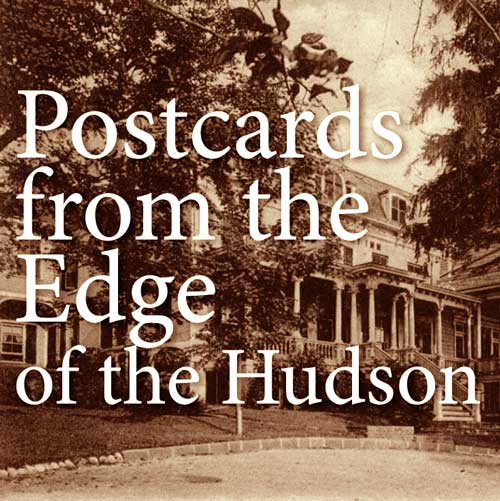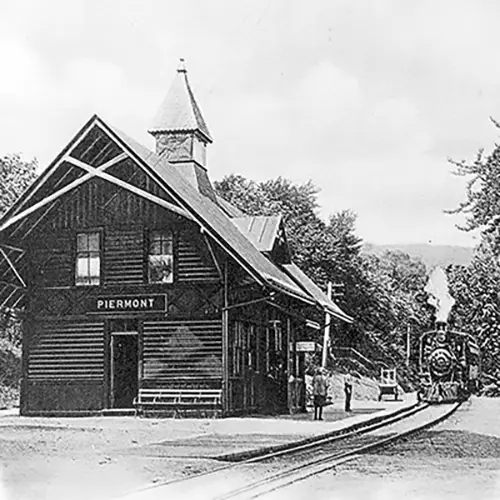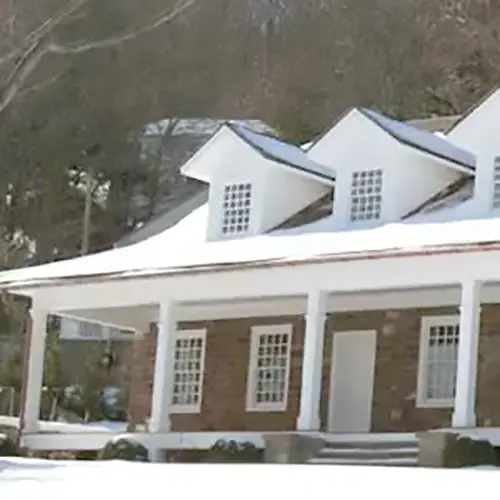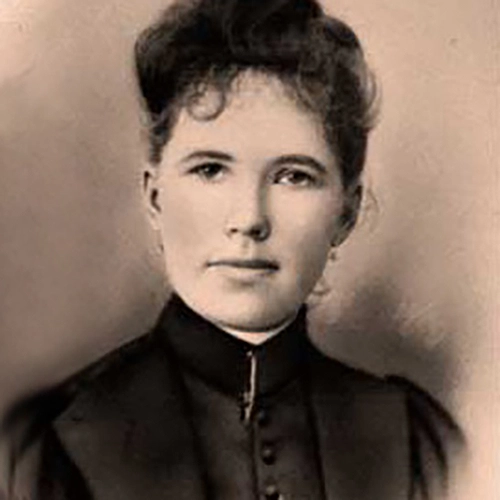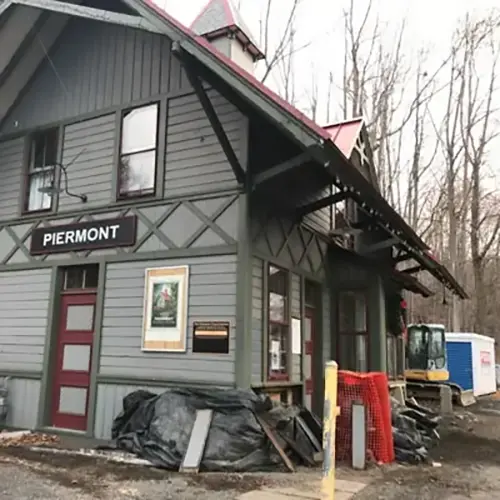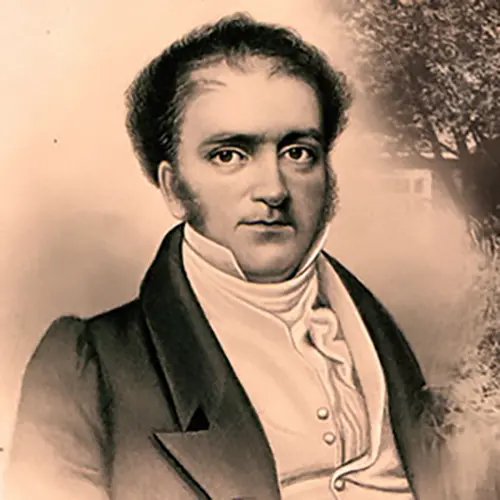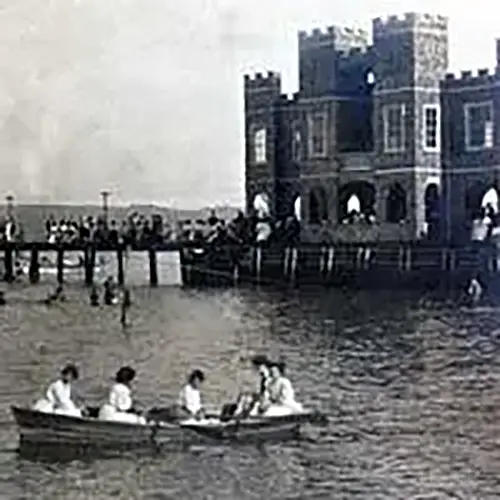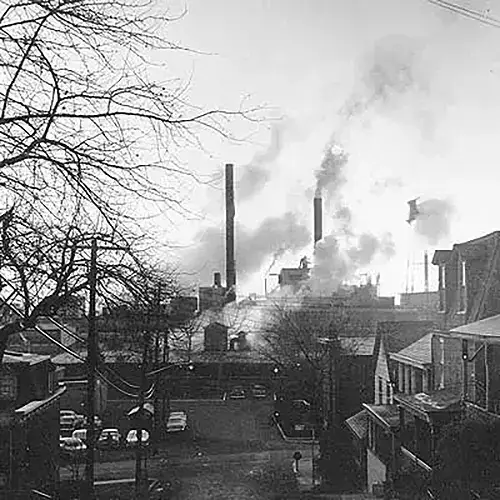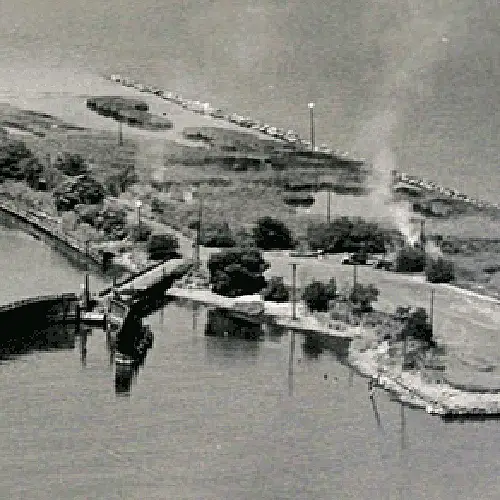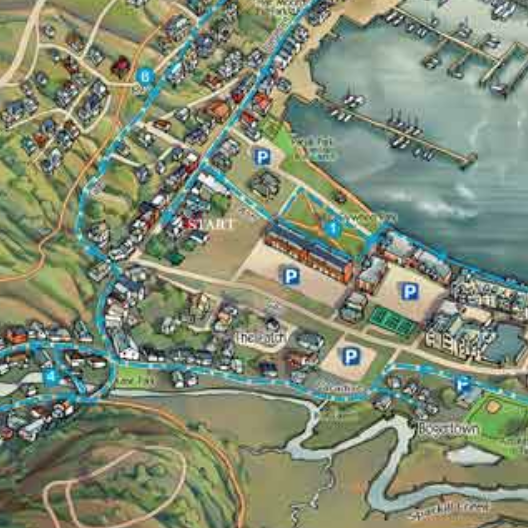The Erie Railroad
The Longest Railroad in the World

Piermont’s most important railroad was the Erie RR that ran nearly 450 miles from Piermont’s pier to Dunkirk, New York on the shores of Lake Erie. It was once the longest railroad in the world. Work was begun in 1835 when workers broke ground at Deposit, New York.
The people at the west end of the proposed line claimed that if the railroad started at the Hudson River it would never get beyond Middletown and would not benefit them. Those at the eastern end, in New York, where most of the money was, thought that if the work started at Lake Erie, the railroad would never get beyond Elmira. No one wanted to invest. So, officials decided to start construction at Deposit, New York – virtually the half-way point of the project.
Building the railroad was a gigantic undertaking. It demanded construction through a wild, wooded and uninhabited country, from the shores of the Hudson River to the waters of Lake Erie. Initial costs were estimated to be $6,000,000. When the railroad was finally completed to Dunkirk, the cost was more than $20,000,000.

Initial surveys showed that the route of the rail line would cross over the Starrucca Creek valley in Pennsylvania. At an elevation of 110 feet above the valley floor, engineers would have to construct a huge bridge that stretched nearly a quarter mile.
Too high for a conventional timber trestle, James Kirkwood, a Scottish civil engineer, proposed that a stone bridge was the answer. With 18 stone arches, each 50 feet wide and 110 feet high, the Starrucca Viaduct was one of the greatest engineering feats of the day. But true appreciation is only possible when one knows that today this same great structure carries a double track railroad with modern heavy locomotives and heavy train loads. Small wonder some of the passengers called it the eighth wonder of the world.

On May 14, 1851, President Millard Fillmore, his Secretary of State, Daniel Webster, and 300 dignitaries left from Castle Clinton at the tip of Manhattan and traveled up the Hudson River to Piermont. That’s where they began the inaugural trip of of the Erie Railroad, the first major railroad in the United States.
Conductors Rule Thanks to Poppy Ayers
The conductor of the first train was Henry “Poppy” Ayres, a massive 300 pound man who had to squeeze through the doors of the train as he moved from car to car. As conductor, Ayers was constantly dealing with the problem of people who refused to pay their train fare.
Since he couldn’t boot passengers off the train while it was underway, he needed a way to signal his engineer to stop the train. Ayers rigged up a make-shift device to get his message to his engineer without having to waddle through the train cars. His solution was a 100-foot bell cord that stretched the entire length of the train, from the engine compartment to the last car. If he needed to stop, Poppy could give the rope a hearty tug no matter where he was on the train.
As a signaling device to the engineer, Poppy tied a stick at the end of the cord that hung in engine compartment. When Poppy wanted the engineer to stop the train, he’d pull the rope and the stick would jump. His engineer, Hamel, the first engineer on the New York and Erie, simply ignored the device and refused to take orders from Poppy.
Several times Hamel even cut down the stick. Ayers finally lost his temper and when the train came to the next stop, Poppy and Hamel battled it out. Poppy won and his signaling device was never ignored again. As a result, conductors, not engineers, ruled the rails on American railroads.
Erie Railroad Firsts
- 1842 – First to ship milk to New York City
- 1842 – First to use a conductor bell-cord to signal engineer
- 1847 – First to use iron rails rolled in America
- 1850 – First to construct telegraph lines on its right of way
- 1851 – First railroad to use telegraph for its operations
- 1851 – First railroad in America with over 400 miles in length
- 1851 – First to connect the Atlantic Ocean to the Great Lakes
- 1851 – First with six-foot gauge, widest in America
- 1861 – First to use tank cars for hauling oil
- 1887 – First to bring fresh produce from California to New York City
First to use a ticket punch.
Because there is no physical reminder of the Erie RR, such as tracks on the pier or across Piermont’s main street, The Erie has been lost to memory and sometimes confused with the Northern RR. On display at the station museum, there is a 1951 photograph of Piermont residents in Flywheel Park celebrating the 100th anniversary of Erie Railroad’s inaugural journey.

